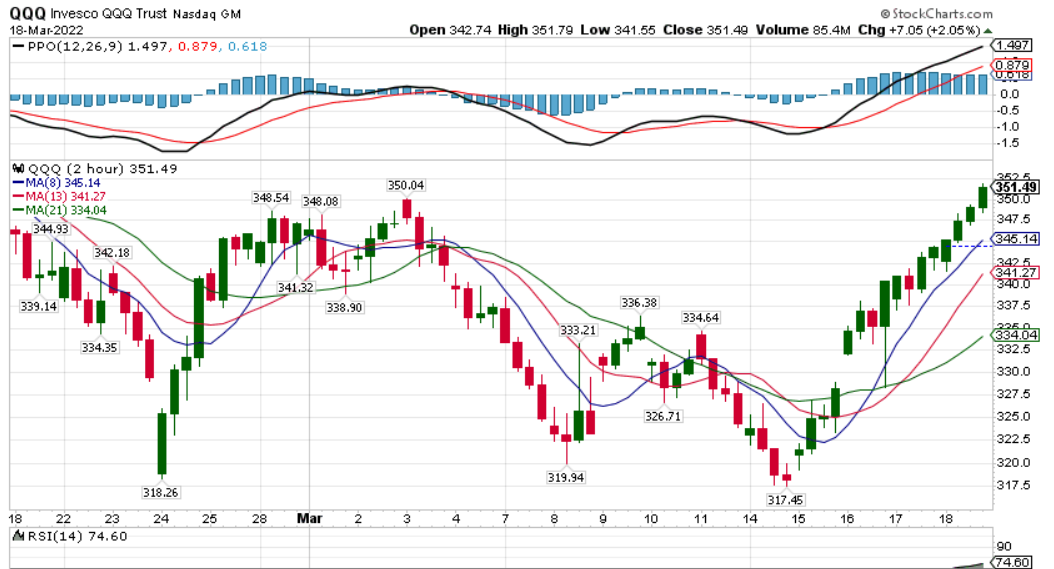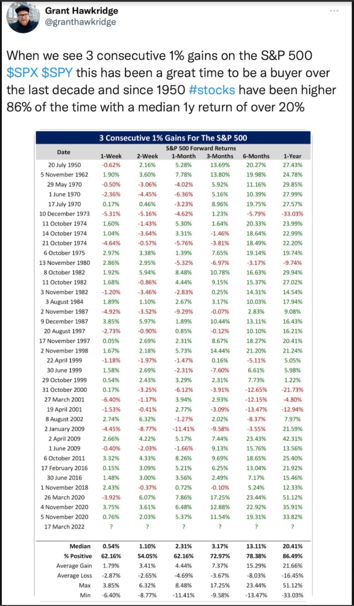After several months of speculation, the Federal Reserve finally withdrew the punch bowl. This ended speculation on “when” and followed their action to reduce a dovish stance. They started scaling back their bond purchases a few months ago, so the inevitable Fed Fund was only a matter of time.
Most economists thought the Fed should have taken this step months ago. As we’ve discussed here over the past few months, is booming. Raising interest rates is one of the fastest and most powerful methods used to slow the economy and eventually reduce inflation.
Inflation has been exacerbated by Russia’s recent incursion into Ukraine. As we highlighted earlier, the battle in Ukraine has slowed or even stopped the export of many agricultural products, including fertilizers, wheat and other cooking oils and food sources needed by many European countries, like Hungary and Italy, fearing not to have enough. food for their own citizens.
With prices rising out of control in almost every category, many expected much more aggressive action from the Fed. Estimates ranged from a quarter point to a full point. With the first interest rate hike in over 4 years, the Fed voted to raise the Fed Funds rate by a quarter point.
They also have up to 6 more increases in 2022. Fed Chairman Powell also reiterated that if they finally hit their target rate of 1.75% or higher in Fed Funds, the economy would be strong enough and resilient to withstand the brakes put in place with little or no risk of recession.
The reaction of the stock market. Is it time to buy?
The relief that the Fed has started a tightening cycle, but not too quickly, and the prognosis that the economy could withstand these hikes, gave investors cause for celebration. Traders covered their shorts and put cash to work.
The news helped propel stocks to one of the best weeks since November 2020. New buying power took stocks out of correction territory and rose more than 5% for the week on the () as well as (). The () did even better and rebounded more than 8% over the week. See the graphs below:

There is historical precedent that when you have at least 3 days of S&P 500 up over 1%, it predicts a good market in the future. Please consult the following table to better understand this historical phenomenon.

S&P 500 earnings
Interest rates are moving forward
Will this be the right remedy against rising inflation? Will these movements begin to slow the economy with the right dose? Will rising and high (and harmful) prices start to fall? Will the average consumer be able to navigate this boiling economy? When will gasoline prices stabilize or even start to fall?
These are important questions that the Federal Reserve will need to weigh carefully when determining whether larger increases in federal funds will suffice. We at MarketGauge were surprised that the Fed only chose to make a 25 basis point (quarter point) hike. Like many others, we thought a larger initial increase was warranted. However, we are reminded that when you go from zero in Fed Funds rates (with accommodation in bond buying) to a quarter point, that is seen as a big jump. But is it big enough?
The Federal Reserve is now walking a very tight tightrope. Although their biggest interest is to stop the rate of inflation, they don’t want to send the economy too quickly into a downturn that could cause a recession. The Federal Reserve is responsible for controlling inflation. This rate is still targeted at 2.0% per year. If they only bring it down to 4.0% or 4.5%, which is expected later this year, will they have to apply the brakes more? Will this send us into a recession?
Suggested steps for managing money in a rising interest rate environment
The period we are entering now can be quite tricky to manage money. Rising interest rates can have a profound effect on slowing the growth rate of certain industries. Higher borrowing costs coupled with lower growth rates generally have a moderating effect on the multiples investors are willing to pay for growth-oriented companies.
Here are some suggestions to help you navigate this environment:
- Include value stocks in your portfolio. This includes consumer staples, oil, basic materials and financial stocks which may react more favorably to the new market construction.
- If you have money in fixed income securities, reduce the duration and mitigate the risk of rising interest rates.
- Take profits if you get a quick move in your stocks. This is much more of a traders market, and we will see some wild swings.
- Keep some powder dry. Having cash that you can put to work after the next swoon can be helpful in reducing the average dollar cost.
- Use Alpha Rotation to help you make short-term decisions about when is the best time to invest money.
- Use Big View and review Sector Plus to see the latest market highlights. We largely took energy, agriculture and raw materials. Our systems identify these areas early on and you can take advantage of themes that work.
- Engage in conversation with a professionally trained financial planner to see how you can mitigate some of your risks. If you’re not working with one, let us know and we’ll connect you with certified planners who understand our work and may be able to help.
Risk Activated/Bullish
- There was a major rally this week across all 4 key indices, with SPY, IWM, and all up at least +5% and QQQ leading by +8.4% (+)
- The S&P has regained its 50-week moving average and a bullish phase, the first key stock index to turn bullish again on a weekly basis (+)
- Consumer Discretionary () +9.1%, Semiconductors () +9.5% and Technology () +7.6% were the top sectors this week, all of which are very risky sectors (+)
- Chinese stocks () as well as several European funds —, — reverted to average this week, rallying +14% after last week’s terrible performance in foreign stocks (+)
- Risk gauges changed dramatically to full risk at all levels (+)
- The number of stocks above key moving averages improved across the board, with the number of stocks above their 50-day moving average returning to neutral levels. (+)
- For the first time this year, growth stocks () are ahead of value stocks () according to our Triple Play indicator, a meaningful indication of Risk-On. (+)
- The most interesting sector of the modern Mish family is transport (), which returned in a bullish phase (+)
- (NYSE:) pulled back this week, still leaving a potential island high in play 2 weeks ago. (+)
Risk off/downside
- QQQ and SPY appear to be a bit rich and potentially overbought according to the McClellan oscillator. (-)
- The most worrisome market indicator right now is the flattening of the yield curve. (-)
- Despite the huge rally in Semiconductors (SMH) +9.5%, it still moved towards a death cross that could serve as significant upside resistance. (-)
- Growth stocks (VUG) have reached lower moving averages in both price and actual movement, testing important resistance levels. (-)
Neutral
- Despite the strong rise, the 4 indices are still negative since the beginning of the year (=)
- The New High/New Low ratios improved slightly for QQQ and SPY despite the strong weekly price action. (=)
- The volatility ratio has improved slightly but shows that short-term volatility is essentially equal to long-term volatility, a signal that the market has yet to digest this week’s upside. (=)
- (NYSE:) bounced off key support at the 200-week moving average after the average reversed from the explosive move seen at the start of the war in Ukraine. (=)
- Soft Commodities () seems to be running out of steam after a dramatic rise and has a gold cross on Real Motion, however, in the short term, DBA seems to have lost its leadership against SPY. (=)
- Longer-term Treasuries () have been oversold and are on their way back higher thanks to the Fed’s rate hike last week, while shorter-term Treasuries () have not been oversold and remain under pressure. (=)
- Foreign equities, including emerging markets and larger-cap foreign equities, have all rebounded and returned to average after being extremely oversold last week, but they continue to underperform US equities on a relative basis. . (=)

